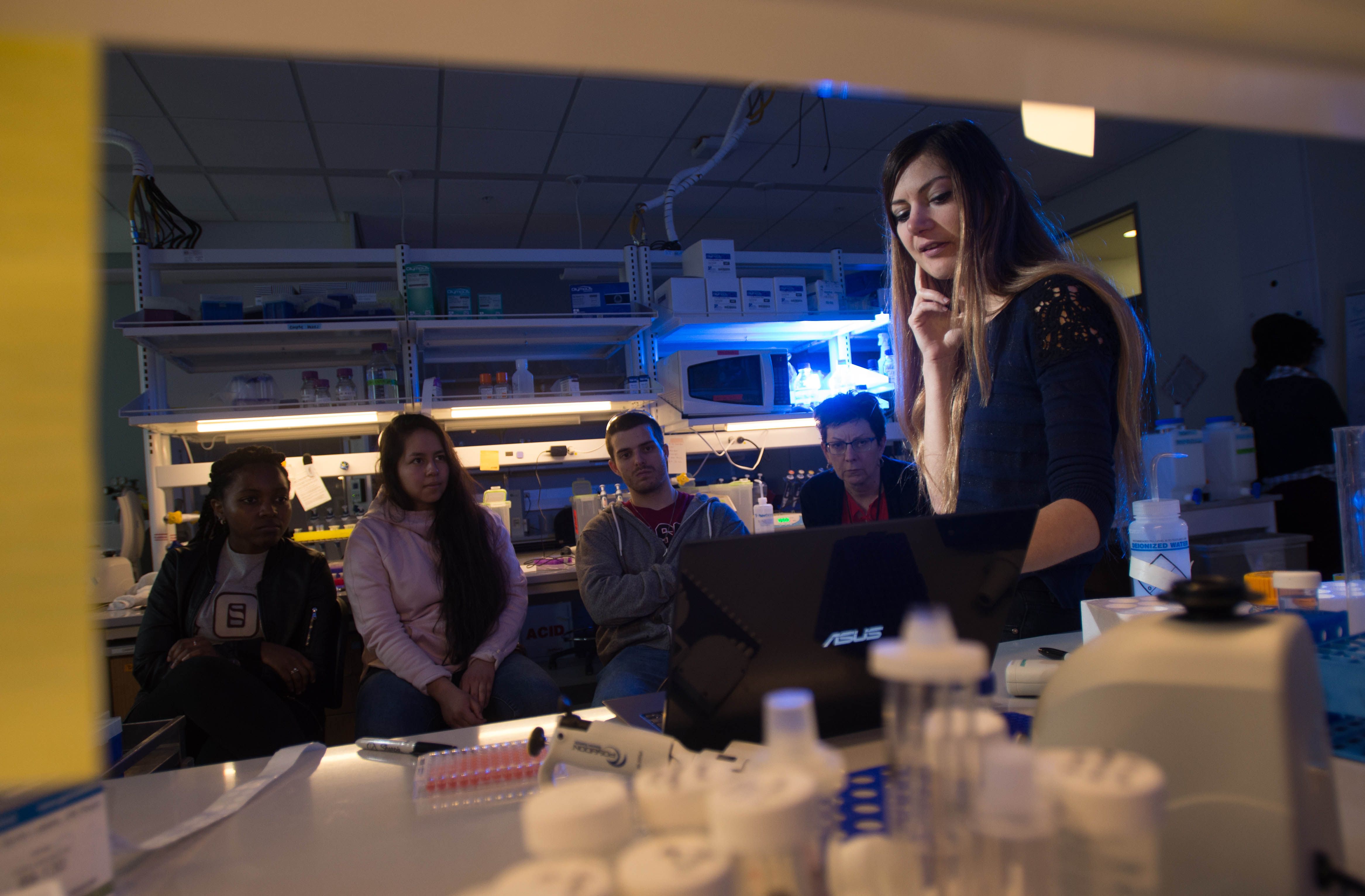French Connection
Kennesaw State biology professor creates international research partnership
Kennesaw, Ga. (March 5, 2019) — Biology professor Susan M.E. Smith’s research in the NADPH oxidase structure and function field is so well regarded, French researchers in her field have joined with her to create a unique international partnership between Kennesaw State University and the Institut de Biologie Structurale (IBS), a unit of the Université Grenoble Alpes.
KSU’s pact with the IBS provides funding for Smith, a Foundation Fellow in the Department of Molecular and Cellular Biology, to conduct research at IBS. The agreement also allows a doctoral student in life sciences from France to spend one month a year in Smith’s KSU lab over the next three years, conducting research under Smith’s guidance.
“It’s exciting to have a life sciences Ph.D. student working alongside me in my lab,” said Smith. “It’s this type of global research collaboration that advances our work in the NADPH oxidase structure and function field in new and impressive ways.”
Another benefit is that Smith’s work at the world-renowned, EU-funded center of physical techniques may elevate the international science community’s interest in her research.
“Conducting some of my research at IBS also helps to bring international recognition for my work in my lab at KSU,” she said.
Smith, who has been serving as an official mentor to life sciences doctoral student Annelise Vermot since October, 2016, will continue in this capacity until Vermot finishes her dissertation in December. Vermot has been conducting research on the NADPH oxidase or Nox protein at IBS, utilizing both neutron scattering equipment and a synchrotron, a sophisticated particle accelerator.
Together at KSU, they are hunting for new ways to defeat certain bacteria-causing organisms that can wreak havoc with our immune systems, causing disease and even death.
 Annelise Vermot is conducting her dissertation research at KSU and at her home institution
in France.
Annelise Vermot is conducting her dissertation research at KSU and at her home institution
in France.
“Good things happen when we work together as a team,” said Smith. “We can compare notes in real time, so it makes it much easier when you’re working around each other exchanging ideas.”
Vermot agreed. “This is different and better, working together. You can read all the various publications about the research others in your field are doing, but here you are working alongside each other,” she said. “Here we can put our ideas together. Susan has helped me so much in gathering knowledge. Each person brings his or her own background and expertise.”
Under Smith’s guidance, Vermot is making excellent progress on her Ph.D. project, experimenting about Nox protein function. She is measuring how fast mutant forms of the Nox protein work, which helps unravel which parts of the protein are important for proper function. This work is a major focus of health-related research.
“The best thing about this situation is the international partnership,” Smith said. “The Université Grenoble appreciates all that the people at KSU have to offer, and I’m pretty excited about mentoring a Ph.D. student in the life sciences. This is a good harbinger for the future at KSU.”
The agreement resulted from Smith’s discussions during the past decade with fellow scientists, Franck Fieschi and Marie-José Stasia of IBS and the Université Grenoble Alpes. The three had bonded over their mutual admiration for their shared interest into the use of enzymes to manipulate or control the structure and certain aspects of the body’s Nox gene to fight disease.
“The nice thing about our collaboration is that the things that Annelise has learned in France and that she and I have learned together in our lab advances her educational program and also helps my research program,” Smith said. “We are thinking about the same thing and focusing on the same things.”
This particular research collaboration is a first for KSU’s College of Science and Mathematics.
The scope of Vermot’s work at KSU is mutually decided by Fieschi, Smith and herself, depending on what has happened in other aspects of her Ph.D. work in France.
“A typical day for me in the lab here,” Vermot said, “involves investigating the effect of changing, or mutating, specific parts of the Nox protein. I’m working with many different proteins, different mutant versions of Nox, and doing several mixes to do the reaction and using various instruments to measure their effectiveness.”
To aid her in her work Vermot uses a spectrometer with a special microplate reader capable of analyzing more than 90 specimens at a time.
“You have to use a spectrometer to see the change, if any, in the reaction. I am modifying parts within a protein to offset this activity,” Vermot said. “I then test the modifications one at a time to see if they play an important role, to see how this protein could work.”
The parts of the protein Vermot refers to are coded for by its DNA.
“While we are not likely to develop any new drugs,” Smith said. “Our work may lead others to develop new drugs where Nox is involved in diseases like those affecting the vascular system, the heart, cancer and diabetes, along with CGD – chronic granulomatous disease – a genetic disease caused by defects in the Nox gene that can make people very sick.”
— Robert S. Godlewski
— Photos by David Caselli











